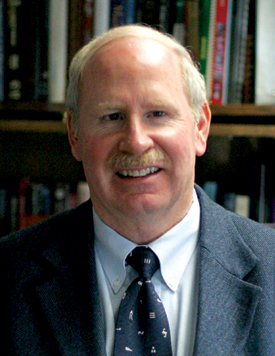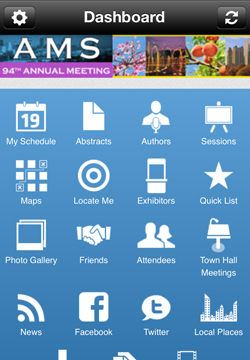by J. Marshall Shepherd, AMS President. Reprinted from The Mind of J. Marsh.
I had no intentions of writing anything about the Anniversary of my Alpha Phi Alpha fraternity brother Dr. Martin Luther King’s historic “Dream Speech” today. But as I sit here in the Tate Center of the University of Georgia eating breakfast and responding to emails from the Executive Director of the American Meteorological Society, a flood of realization came over me. Dr. King’s Dream is tangible for me and my career path.
King stated in 1963:
“I have a dream that one day little black boys and girls will be holding hands with little white boys and girls.”
I am one of those little black boys. I grew up in a small town north of Atlanta called Canton, Georgia. It is home and I cherish it. Yes, it had (and has) as any place does, pockets of hate and narrow thinking, but my experiences reflected the aforementioned quote. I went to school with, played S.W.A.T with, played sports with, and interacted with white and black kids. I eventually went on to be the first African American Valedictorian at Cherokee High School. I don’t make this point to brag. I make the point because it presents a dilemma in how I view it. On one hand, I feel proud to have achieved a goal and hopefully inspired someone else to strive to achieve academically. On the other hand, over 25 years later, I may still be the only person that looks like me to have given that speech. Indeed, times have changed but there is still room for me to continue to dream for my kids or for cousins that may aspire to similar goals at Cherokee High School.
But, I want to reflect on my personal career trajectory as a projection of King’s Dream forward.
I was blessed to be the first (and only) African American to receive a PhD in meteorology from Florida State University. This presents the same aforementioned dilemma. It’s too far past 1963 for these types of “firsts.” After a successful career at NASA, I returned to my home state of Georgia and am now the Director of the Atmospheric Sciences Program and the Athletic Association Professor of Geography and Atmospheric Sciences at the University of Georgia. Only 2 years before Dr. King delivered his “Dream Speech,” the University of Georgia was integrated and allowed black students, and now I am teaching, advising and mentoring students of all races.
Another significant milestone and blessing came last year when my peers, the members of the American Meteorological Society (AMS, www.ametsoc.org), the largest and oldest professional society in my field, elected me to serve as President. To serve as the President of one of the more influential science organizations in this country is a privilege and honor. So back to the email I mentioned earlier from Dr. Keith Seitter, AMS Executive Director. I emailed Keith to inquire how many members of the AMS would have looked like me in 1963, the time of the “Dream” speech. I guessed less than 10. Keith’s reply:
“Other than (Charlie) Anderson, I can only think of Warren Washington (not sure when he might have joined but probably close to then), and maybe June Bacon-Bercy (though she may have come on the scene closer to 1970), So, yes, almost surely less than 10, but probably not zero.”
These numbers are not a reflection of the AMS, it is more of reflection of the times. However, in 2013, a relatively : ) young African American that has loved weather since 6th grade presides over this esteemed organization with contributions from all races, genders, and cultures. I am the 2nd African American to serve as AMS President. My mentor and recent National Medal of Science recipient, Dr. Warren Washington (https://www2.ucar.edu/atmosnews/news/2890/warren-washington-receives-national-medal-science), was the first.
I owe many aspects of my career to the AMS and Warren Washington. I received one of the first AMS Industry Fellowships, have been afforded opportunities to lead and inspire within the organization, and have experienced the scholarly community of a first-class organization. Warren Washington invited me as a young scholar to spend a week with him at the National Center for Atmospheric Research (NCAR) and gave me sage advice that I carry with me to this day and try to pass along also. Blacks are still underrepresented in Science, Technology, Engineering, and Math (STEM) careers and my field is no exception. However, I offered some thoughts on how to overcome this in a recent Ebony.com article (http://www.ebony.com/career-finance/why-african-americans-may-be-left-out-of-the-21st-century-job-market-498#axzz2dGuk9Ktq). One of those suggestions is mentorship and I am grateful to Warren (another Alpha Fraternity brother, by the way) for life. I originally hesitated when approached to be put on the ballot for the AMS Presidency, but then I reflected on how I might inspire some boy or girl, irrespective of race.
There are so many other examples of my traceability to the Dream as the nation reflects on this anniversary, but I hope you see why I say that “I am one of those little black boys” in the Dream speech.

